
Falco Feeds extends the power of Falco by giving open source-focused companies access to expert-written rules that are continuously updated as new threats are discovered.

Cloud vulnerability management is broken. Teams are drowning in alerts, chasing false positives, and spending more time debating what to fix than actually fixing it.
But what if your tools could understand what matters and take action on your behalf?
That’s the promise of agentic AI, a new generation of goal-oriented, autonomous AI that doesn’t just assist but actively drives security outcomes. If you’re new to the concept, start here: What is Agentic AI.
At Sysdig, we’re turning that vision into reality, starting with the biggest source of security toil: vulnerability management.
Agentic cloud security: The next chapter for Sysdig Sage™
With Sysdig Sage™, we’ve already helped security teams investigate, respond, and reduce risk across the CNAPP lifecycle. But now, we’re going further.
Agentic cloud security builds on that foundation, introducing autonomous agents that analyze your environment, understand your business, and take action with minimal human effort. Vulnerability management is the first use case, and it sets the tone for what’s next.
Traditional vulnerability management is full of friction
Managing vulnerabilities is notoriously tedious. There's too much noise, too many false positives, and far too many manual steps. We’re here to change that.
Let’s look at the standard vulnerability management lifecycle and why it’s painful:
- Asset discovery and assessment
Collect and scan all workloads. Results are often noisy and incomplete. - Prioritization of identified vulnerabilities
Manually review hundreds or thousands of findings to decide what matters. - Remediation and mitigation
Track down owners, open tickets, gather fix guidance, and follow up. - Validation and monitoring
Manually check whether fixes worked and watch for regression. - Reporting and improvement
Build executive reports, analyze metrics, and try to iterate.
Every step is heavy with manual work. That means delays, burnout, and risk exposure.
The agentic way with Sysdig Sage
We’ve reimagined every step with autonomous AI agents working on your behalf. Here’s how it works.
Remove the Noise
The first step is cutting through the clutter, not as the final goal, but as the foundation for meaningful action. Every alert we eliminate is time you gain back.
- Automatically identify production environments using semantic analysis.
- Runtime-aware filtering removes vulnerabilities not loaded in memory (~50–90% noise reduction)
- Context-aware filtering deprioritizes CVEs that require missing runtime conditions (~30–90% more)
- Deep vulnerability analysis adds 5%-10% more by evaluating exploitability in real-world context.
- You can act on these findings, for example letting Sysdig Sage open JIRA tickets with full context.
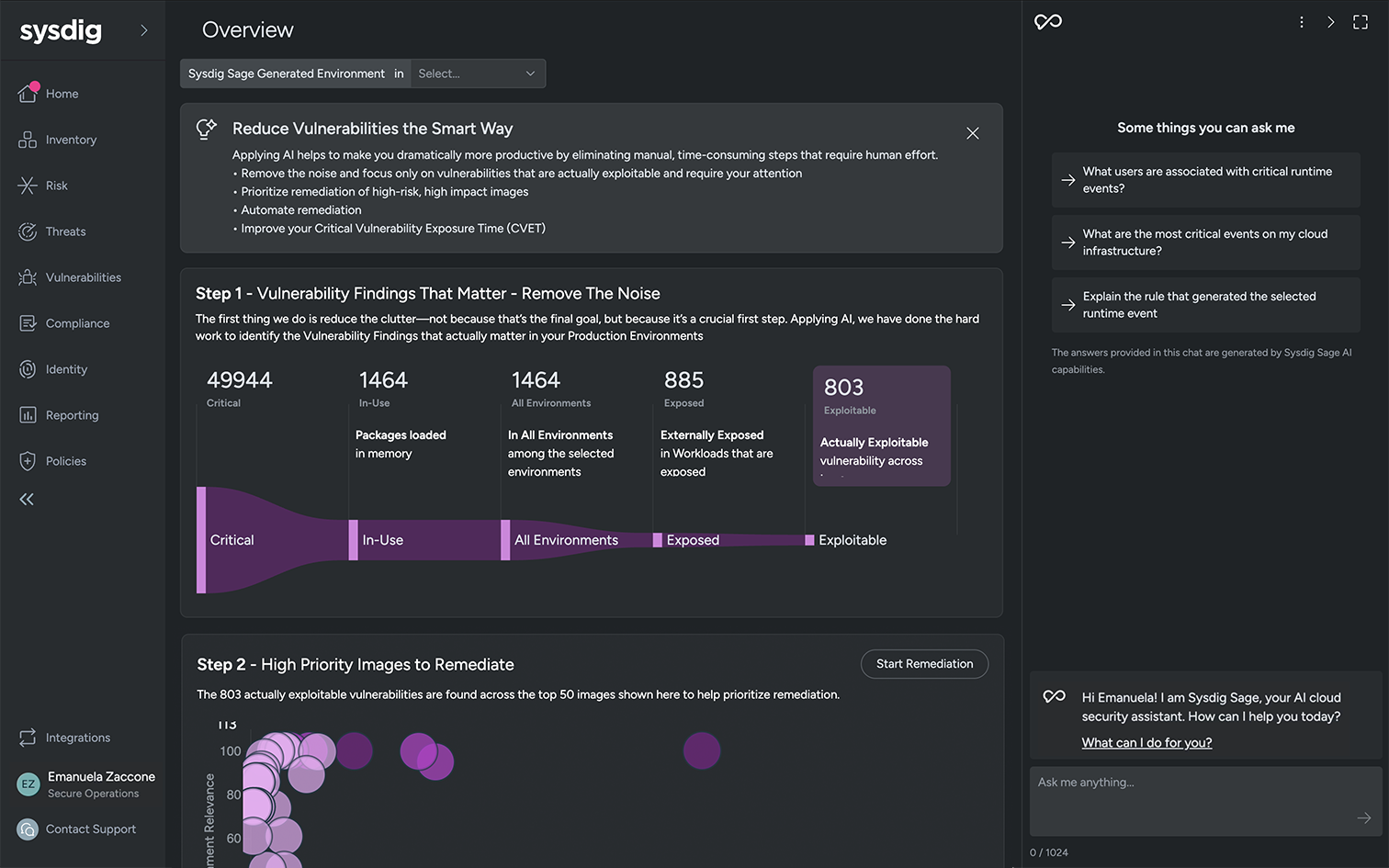
Explain what matters, in context
We don’t just show data, we help you understand what it means.
For every stage in the vulnerability funnel, Sysdig Sage can explain what’s included and why it matters. Without needing to type anything into chat, you can simply click the Sysdig Sage icon directly in the UI and immediately get a clear, contextual explanation of what a specific step of the funnel means, how it’s calculated, and how it helps reduce noise.
This lowers the learning curve for new users and builds trust in the system's decisions.
It's a small interaction, but it reinforces a big idea: Agentic Cloud Security is here to guide the users, not just inform them.
Also, this builds confidence in the filtering logic and helps you trust the prioritization.
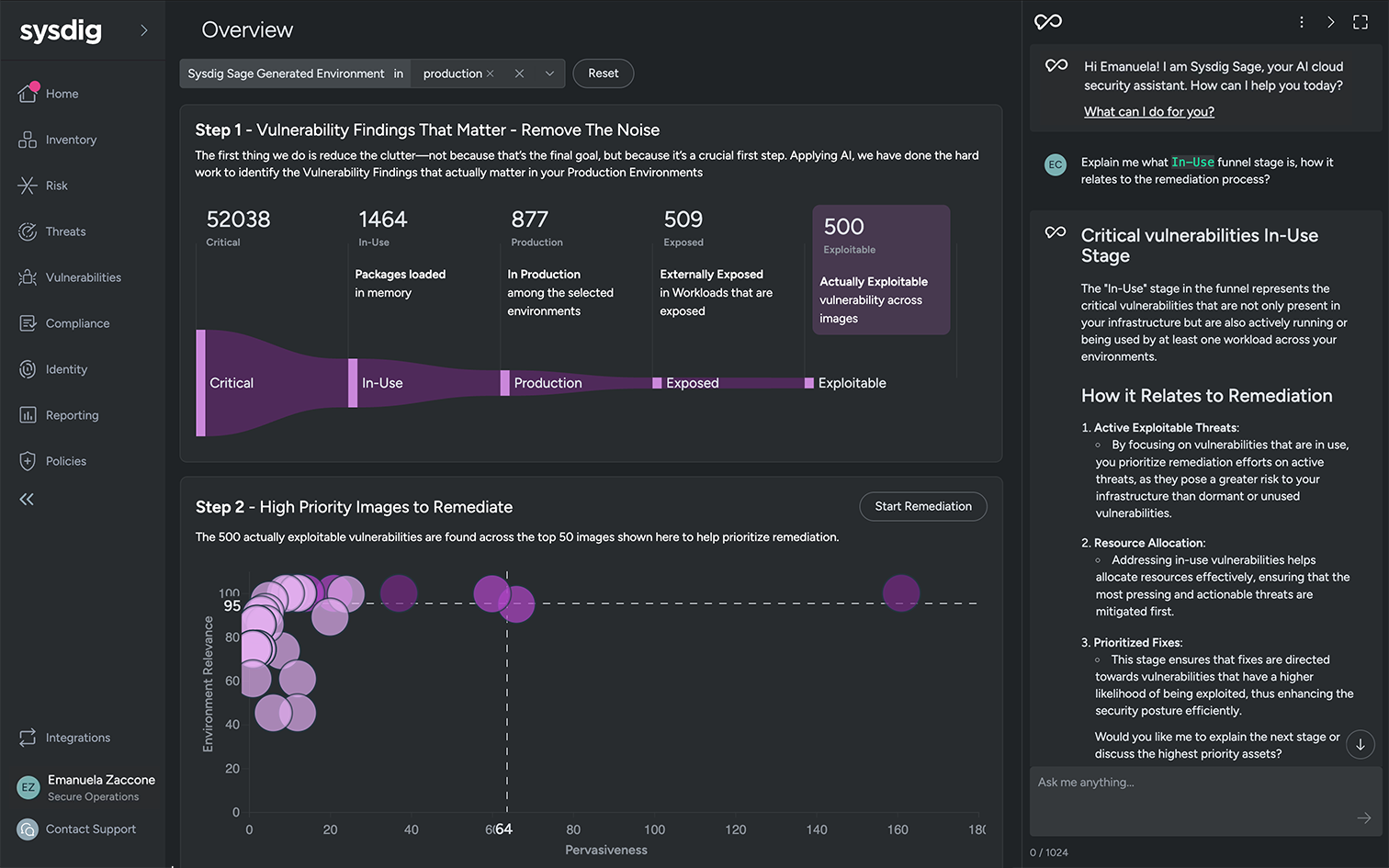
Focus on the vulnerabilities that matter
After the noise is gone, we help you zero in on high-leverage actions.
- Widespread issues
Fixing one container image could eliminate thousands of findings. - Severity and impact
We highlight vulnerabilities that could expose sensitive data or create real business risk. - Fixability
If something can be fixed easily, we move it to the front of the line.
Example: Fixing a single image with seven critical vulnerabilities might reduce 7,000 findings across your environment and address 20% of your overall risk.
The bubble chart will focus on three main KPIs:
- Environment relevance: Measures the business impact of where the image is running.
- Pervasiveness: Measures how widespread the image is across workloads.
- Sysdig Sage impact priority: AI-generated score combining severity, exposure, and environment signals.
Sysdig Sage handles the triage, so you don’t have to.
The result: faster decisions, less risk, and no wasted effort.
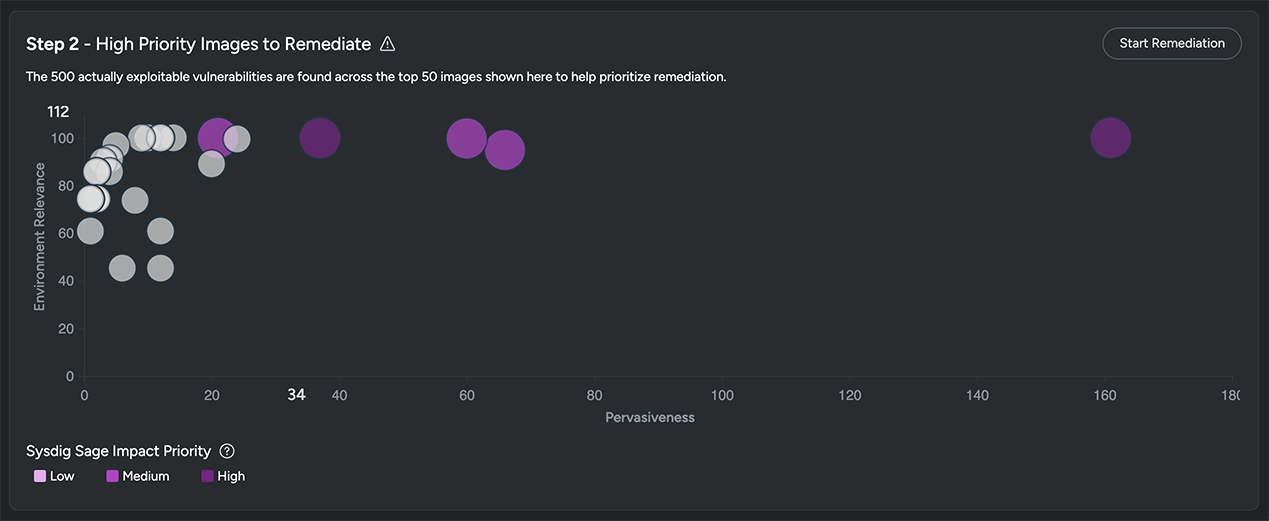
Time to fix
Now that you know what to fix, Sysdig Sage will help you act with:
- AI-generated remediation instructions
Clear, specific guidance tailored to your environment - Automated ticket creation
Create issues at the image or finding level, pre-filled with all relevant context
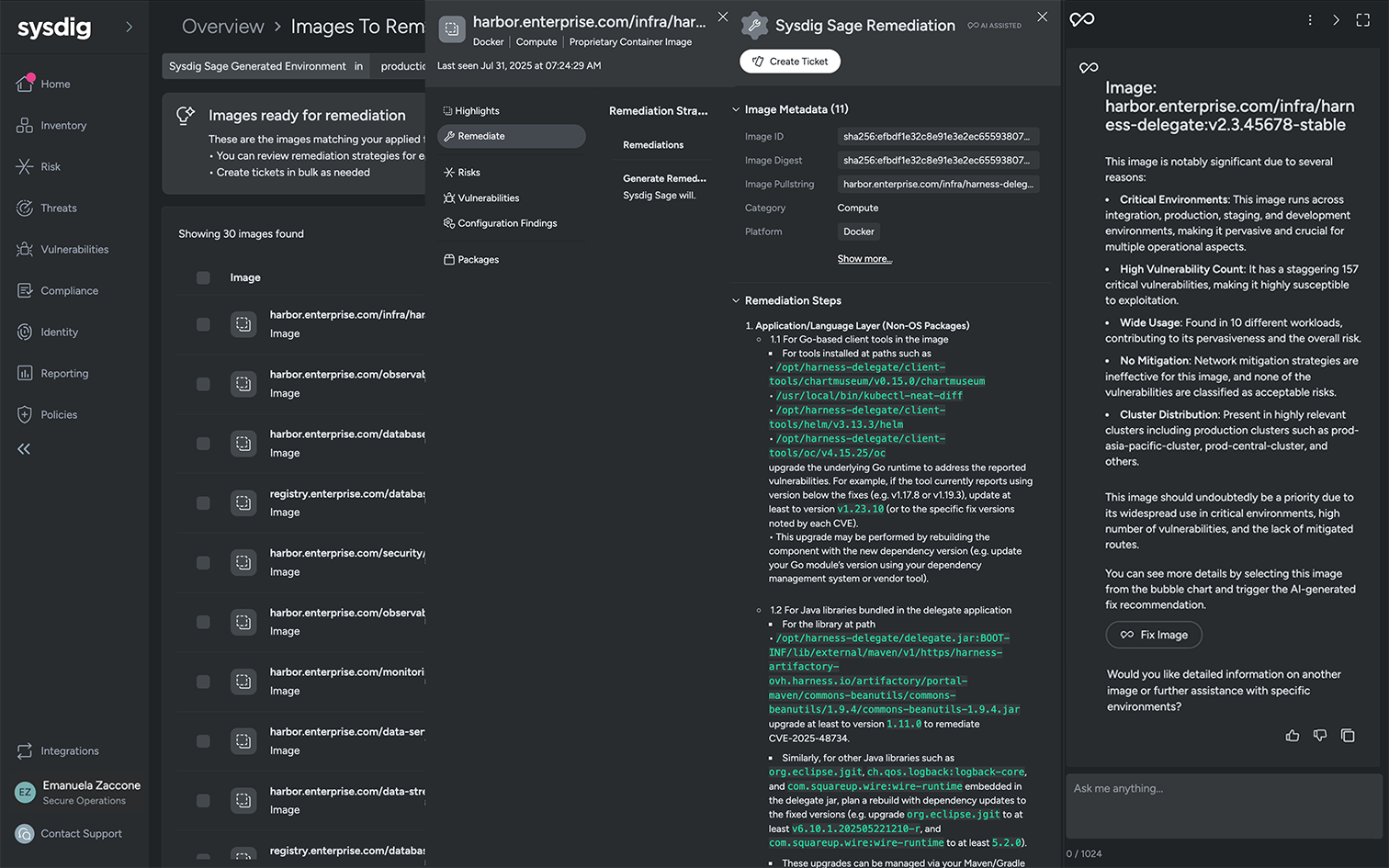
Track progress over time
Remediation isn’t just about fixing, it’s about proving progress.
Sysdig Sage makes it easy to track progress and share it with relevant stakeholders.
- Risk posture tracking
Visualize reductions in exposure and time to resolution. - Audit-ready reports
Demonstrate business impact and compliance. - Feedback loop
Share results with the board, the C-suite, or your dev teams to close the loop.
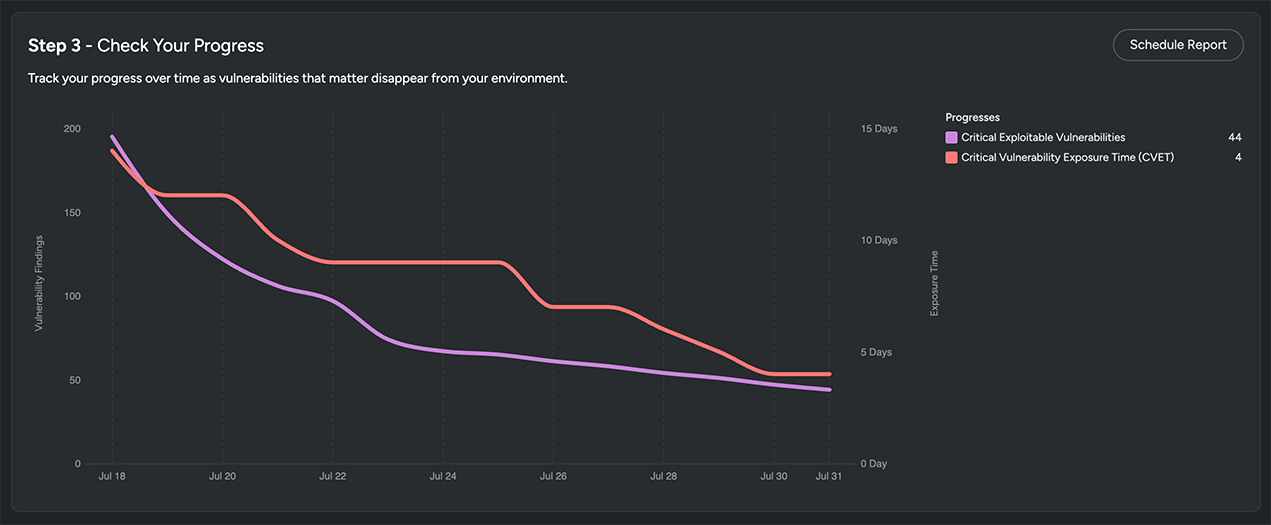
.
The results, quantified
By turning traditional VM workflows into agentic processes, Sysdig Sage helps you:
- Save up to 80 hours per week of manual triage and remediation work
- Reduce time-to-fix for critical vulnerabilities from days to minutes
- Filter out more than 95% of low-risk noise
- Shift security teams from reactive ticket triage to strategic improvement
What comes after vulnerability management?
This is only the beginning.
The same agentic architecture will power future capabilities in Cloud Detection and Response (CDR), Posture Management, and Threat Remediation.
We’re building toward a world where AI doesn’t just give you insights, it helps you get things done.
This is how innovation should work. This is cloud security the right way.
Ready to see agentic cloud security in action?
Ready to explore the next chapter of Sysdig Sage and see how agentic AI is reshaping the future of security? Register to attend our webinar: See the Future of Cloud Defense: Agentic Cloud Security in Action.


